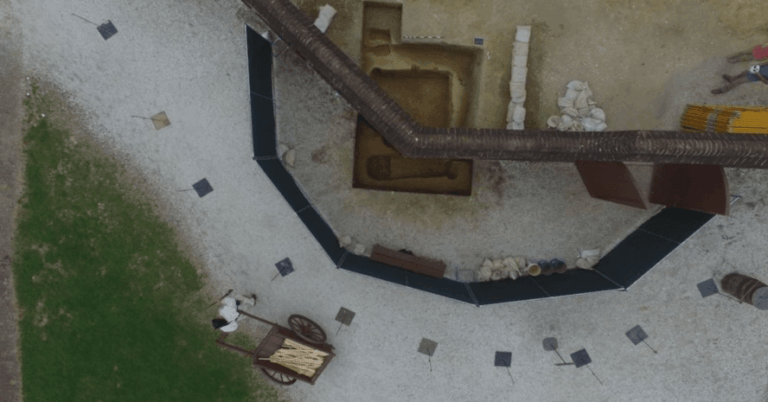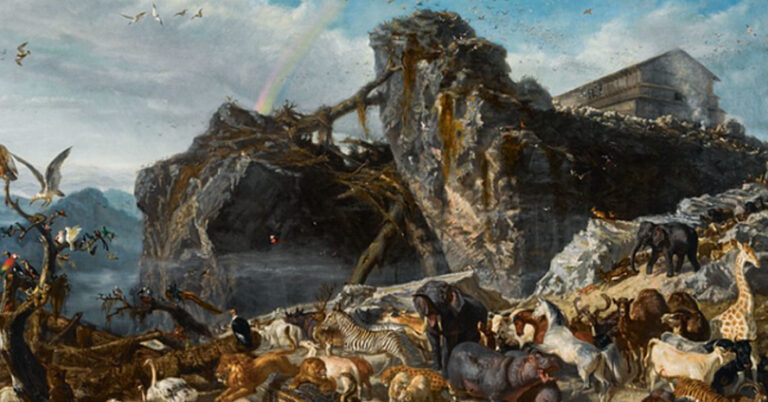Picture yourself standing on an ancient shoreline, waves gently breaking against rocks. People once walked these same grounds thousands of years ago—hunting, living, thriving. Their stories have remained hidden… until now.
In a fascinating twist of fate, this ancient jawbone wasn’t discovered by scientists on an expedition, but by fishers trawling the Penghu Channel off Taiwan. After being sold to an antique shop, a sharp-eyed collector spotted it and purchased it in 2008, then later donated it to Taiwan’s National Museum of Natural Science. This unexpected journey from seafloor to museum cabinet to scientific breakthrough shows how history can emerge from the most unlikely places. Analysis has confirmed it belonged to a male Denisovan, a member of a mysterious group of ancient humans whose existence was barely known until recently. This isn’t just another fossil find—it’s a doorway into a shadowy past we’re only beginning to understand.

Who Were These Mysterious Denisovans?
The Denisovans are kind of like history’s ghosts. Scientists only discovered them about fifteen years ago when they found a finger bone in a Siberian cave. Unlike Neanderthals, who left behind plenty of evidence—tools, art, and numerous skeletal remains—the Denisovans have been mostly invisible, known mainly through their DNA rather than physical artifacts.
Here’s the wild part: many people alive today, especially those with ancestry from Oceania and Southeast Asia, carry Denisovan DNA in their genes. We’ve been walking around with pieces of these ancient people inside us without even knowing it! Some researchers believe certain Denisovan genetic adaptations may have helped modern humans adjust to high-altitude environments and fight off specific diseases. Yet despite this genetic legacy, we’ve known almost nothing about what they looked like, how they lived, or what their society was like.
That’s why this jawbone is such a big deal. Every new Denisovan discovery is like finding a rare treasure—each one fills in crucial gaps in a story that’s been hidden for millennia.

The Jawbone That Changed Everything
Dating between 10,000 and 190,000 years old, this jawbone has giant molars and other features typical of what little we know about Denisovans. But what’s truly mind-blowing is where they found it. Until now, scientists thought Denisovans mainly lived in Siberia and Tibet’s highlands. This discovery suggests they ranged much farther across eastern Asia than anyone imagined.
The questions start piling up immediately: How did they travel so far? Did they build boats? Were they adapted to coastal living? Did they fish? Hunt marine mammals? And perhaps most intriguingly—how did this jawbone end up on the seafloor?
One theory suggests that when this individual lived, sea levels were much lower during one of the ice ages, and what’s now underwater was once dry land. As the ice melted and seas rose, ancient coastlines were submerged, taking with them the remains of those who once lived there. It’s entirely possible that beneath today’s oceans lie countless archaeological sites we haven’t even begun to explore.
New Technologies Unlocking Ancient Secrets
When traditional DNA analysis wasn’t possible for this jawbone, scientists pivoted to protein analysis—a game-changer for studying ancient remains. By examining proteins in the dental enamel, researchers identified a signature matching known Denisovan remains.
This approach opens doors to studying fossils previously considered too damaged for analysis, potentially revolutionizing our understanding of ancient history. Some researchers are already talking about applying similar techniques to other mysterious remains found throughout Asia—fossils that have defied traditional classification methods.
The proteins found in this jawbone aren’t just confirming its Denisovan identity—they’re also revealing subtle details about diet, health, and possibly even the individual’s age when they died. Each protein is like a tiny time capsule, preserving information that would otherwise be lost forever.
Why Should We Care About Some Old Jaw?
I know what you might be thinking: “Why does an old jawbone matter to me?” But think about it—this bone belonged to a real person who breathed the same air and walked under the same stars as we do. They had hopes, fears, and daily struggles.
When we connect with discoveries like this, we’re not just memorizing facts—we’re reaching across time to touch another human experience. The Denisovans might seem like characters from a science fiction story, but they were as real as you and me.
There’s something profound about recognizing our connection to people who lived tens of thousands of years ago. It reminds us that we’re part of something much bigger than our individual lives—a long, unbroken chain of human existence stretching back into the distant past.
Plus, understanding our ancient relatives helps us understand ourselves better. Many traits we take for granted today—our immune systems, our ability to live in diverse environments, even some behavioral tendencies—were shaped by these ancient interactions between different human groups.

Rethinking Human Evolution
We used to think human evolution happened in a straight line, but now we know different human species overlapped and even interbred. Homo sapiens, Neanderthals, Denisovans—they all crossed paths, shared territories, and sometimes shared beds.
As Professor Clive Finlayson said ”Some time ago we replaced a linear view of our evolution by one represented by a branching tree. It is now time to replace it with that of an interwoven plexus of genetic lineages that branch out and fuse once again with the passage of time.”
This single jawbone represents one individual, but it forces us to redraw our maps of ancient human migration and rethink who our ancestors really were. It suggests that Denisovans weren’t just isolated in cold northern regions—they were widespread throughout Asia, adapting to diverse environments from mountains to coastlines.
The discovery also raises questions about interactions between different human groups. Did Denisovans and early Homo sapiens meet along these ancient shorelines? Did they trade, fight, or form alliances? Did they share knowledge about fishing or boat-building techniques? Each question opens doors to fascinating possibilities about our shared past.

The Mystery of Disappearance
One question that continues to haunt researchers is: what happened to the Denisovans? Why did they disappear while our ancestors survived? The jawbone doesn’t answer this directly, but it adds another piece to the puzzle.
Some theories suggest climate change played a role, while others point to competition with other human groups. There’s even speculation that they didn’t disappear entirely but were simply absorbed into larger Homo sapiens populations through interbreeding.
The Mystery Continues
This Taiwanese seafloor discovery isn’t the end of the story—it’s just opening a new chapter. How did Denisovans end up there? How did they interact with other human species? What was their daily life like? Did they have art, music, or religious beliefs?
As we walk the same earth they once did, countless other relics remain hidden beneath our feet or under the waves. Each discovery adds another piece to humanity’s puzzle, reminding us that history isn’t set in stone—it’s constantly evolving as we uncover more of our shared past.
The research team is already planning follow-up expeditions to search for more remains in the area. They’re also collaborating with geneticists to look for unique Denisovan genetic signatures in modern populations living near where the jawbone was found.
The mystery of the Denisovans continues, and with each new finding, we come a little closer to understanding not just who they were, but who we are too. That ancient jawbone, silent for millennia, is finally telling its story—and it’s a story that belongs to all of us.




